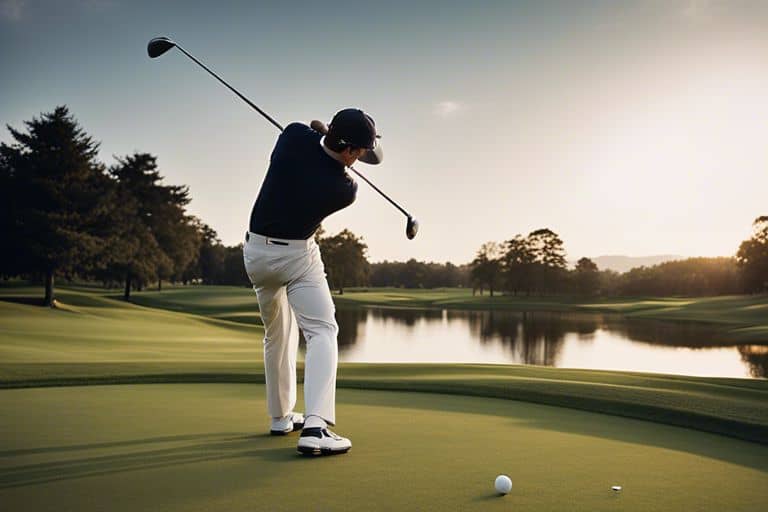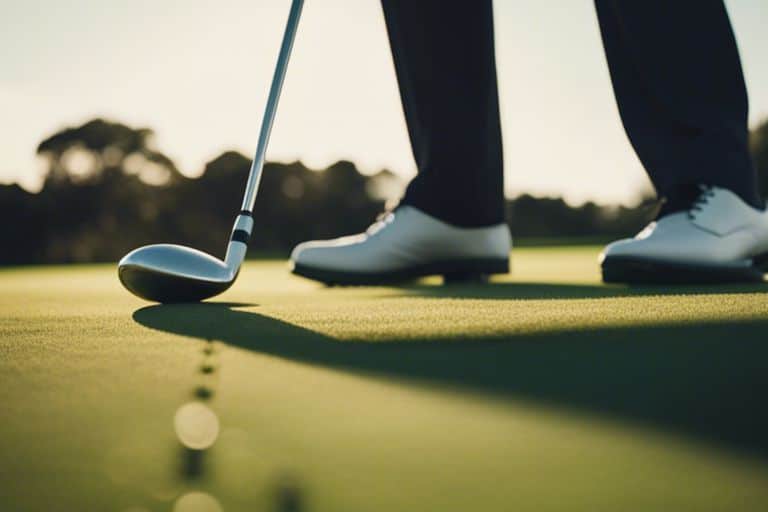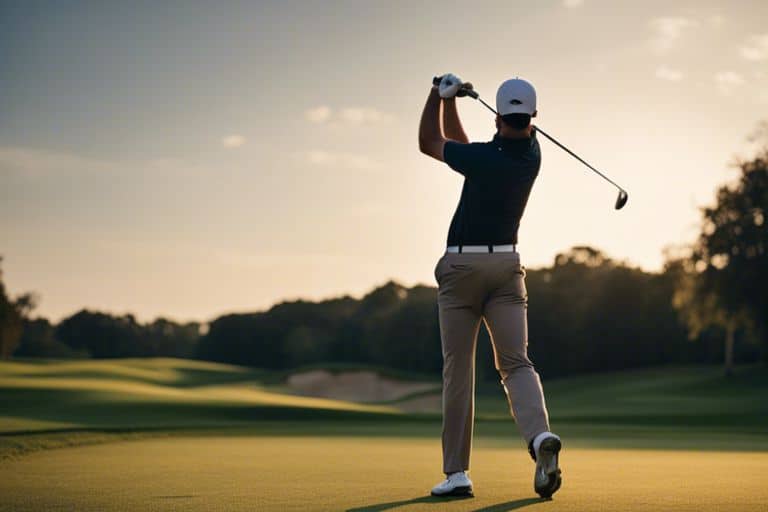How do you hit a "floater" shot in golf?
Perplexed about how to execute a “floater” shot in golf? Fret not! I have been perfecting this shot for years, and I am here to share my expertise with you. When hitting a “floater” shot, it is crucial to understand the importance of a smooth, controlled swing. Visualize the ball gently floating towards the green, using a gentle touch and precision to achieve the perfect trajectory. Keep reading as I break down the technique and give you useful tips to help you master this shot on the golf course.
Fundamentals of the Floater Shot
The floater shot in golf is a delicate and finesse shot used to navigate over hazards or onto firm greens with minimal roll. It requires a precise touch and a good understanding of the fundamentals. In this chapter, I will discuss the key elements of executing a successful floater shot and provide tips for mastering this challenging skill.
Proper Stance and Grip
When setting up for a floater shot, it is essential to establish the correct stance and grip to ensure a clean contact with the ball. I recommend positioning your feet slightly wider than shoulder-width apart, with the ball positioned in the middle of your stance. This will help promote a shallow angle of attack and a smooth, upward strike on the ball.
As for the grip, I suggest gripping the club with light pressure, allowing for a fluid and controlled motion through the impact zone. Ensure that your hands are slightly ahead of the clubhead at address to encourage a descending blow on the ball.
Swing Mechanics for the Floater Shot
The technique for the floater shot differs from a standard full swing and requires specific adjustments to execute successfully. When preparing for the shot, I recommend maintaining a stable lower body throughout the swing, allowing the club to work under the ball and create the desired loft. As I swing through the ball, I focus on maintaining a smooth and accelerating motion, using the loft of the club to elevate the ball and deliver a soft landing. It is crucial to emphasize a relaxed and rhythmic swing, avoiding any excessive force or manipulation that can lead to errant shots.
By mastering the proper stance and grip, as well as refining the swing mechanics for the floater shot, you can develop a reliable and effective technique for navigating challenging lies and tight pin positions on the course. Keep in mind that practice and patience are essential for honing this skill, but once mastered, the floater shot can become a valuable asset in your arsenal on the golf course.

The Right Equipment for a Floater Shot
Assuming you are ready to tackle the challenge of hitting a “floater” shot in golf, it is important to make sure you have the right equipment to execute this advanced technique. The right club and golf ball characteristics can significantly impact the effectiveness of your floater shot. Let’s dive into the details of selecting the appropriate club and understanding the golf ball characteristics that impact the floater.
Selecting the Appropriate Club
When it comes to hitting a successful floater shot, the choice of club is critical. I recommend using a wedge or a high-lofted iron for this shot. These clubs are designed to get the ball up quickly and can provide the necessary height and trajectory for a successful floater. The loft angle of the club is also crucial, as a higher loft will help you achieve the desired height for the shot. When selecting the club, make sure to consider the lie angle and the shaft flex to ensure it suits your swing and playing style.
Golf Ball Characteristics that Impact the Floater
Understanding the characteristics of the golf ball can also impact the execution of a floater shot. The compression of the golf ball can affect how it reacts when hitting a floater. A softer compression golf ball tends to spin more and stay in the air longer, making it ideal for a floater shot. Additionally, the dimple pattern on the golf ball can influence its aerodynamics and flight. Consider using a golf ball with a design that promotes increased lift and carry for your floater shot.
Executing the Floater Shot
Your ability to successfully execute a floater shot in golf will depend on your understanding of the technique and your mental approach. In this section, I will guide you through the process of hitting a successful floater shot, from visualizing the shot to the step-by-step guide.
Visualizing the Shot and Picking Your Target
When preparing to hit a floater shot, it is crucial to visualize the trajectory of the ball and pick a specific target to aim for. I recommend choosing a spot on the green where you want your ball to land, and mentally picture the arc and roll of the ball from your current position to the target.
Step-by-Step Guide to Hitting a Successful Floater
Executing a successful floater shot involves a combination of technique and mental focus. Below, I have broken down the process into a step-by-step guide to help you master this challenging shot. Remember, the key to hitting a successful floater shot is to control the trajectory and land the ball softly on the green.
| Step | Instructions |
| 1 | Set up with a slightly open stance and place the ball slightly forward in your stance to promote a higher ball flight. |
| 2 | Focus on a smooth, controlled swing with a slightly abbreviated follow-through to create the necessary loft for the floater shot. |
| 3 | Engage your wrists to generate extra height on the shot, but be careful not to overdo it and lose control of the ball’s trajectory. |
| 4 | Keep your eyes on the ball and maintain a steady rhythm throughout the swing to ensure a clean contact and consistent trajectory. |
| 5 | Follow through with your swing and hold your finish to maintain balance and control as the ball floats toward the target. |

Advanced Techniques and Considerations
To hit a successful “floater” shot in golf, there are some advanced techniques and considerations to keep in mind. Let’s break down some of the key points to consider:
- Club Selection: Choose a club with higher loft to help get the ball up in the air quickly.
- Ball Position: Play the ball slightly forward in your stance to promote a higher trajectory.
- Wrist Action: Soften your wrists and grip to create a smooth, effortless swing.
- Follow Through: Allow the club to continue past impact, creating a higher ball flight.
Adjusting for Wind and Weather Conditions
When hitting a “floater” shot, it is essential to adjust for wind and weather conditions. Strong gusts of wind can easily affect the flight of the ball, so be sure to take these factors into account. I recommend checking the wind direction and speed before making your shot. Additionally, consider how the weather conditions, such as rain or humidity, may impact the ball’s flight and adjust your technique accordingly.
When to Use a Floater Shot on the Course
It is important to understand when to use a “floater” shot on the golf course. I find that this type of shot is particularly useful when faced with an obstacle, such as a bunker or water hazard, that requires a high, soft landing. Additionally, if you need to carry the ball over a tree or other obstruction, a “floater” shot can be a valuable tool in your repertoire. However, I caution against using this shot in windy or adverse weather conditions, as it may be challenging to control the ball’s flight.

Conclusion
Ultimately, hitting a “floater” shot in golf requires precise execution and a keen understanding of the mechanics involved. By maintaining a soft grip and ensuring proper weight distribution, you can effectively strike the ball with just the right amount of loft to land softly on the green. Remember to focus on a consistent and smooth swing, as well as maintaining a steady tempo to achieve the desired result. With practice and attention to detail, you can master this challenging and impressive shot to elevate your golf game.






